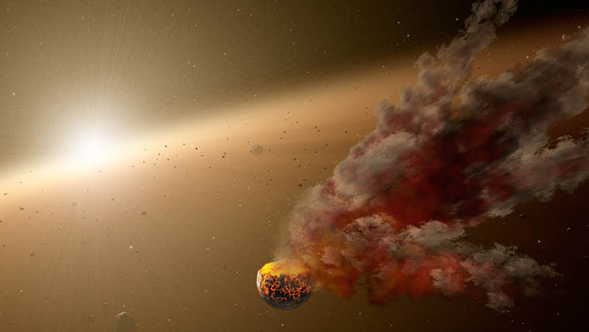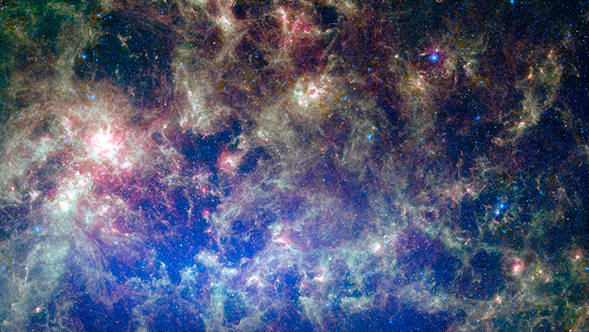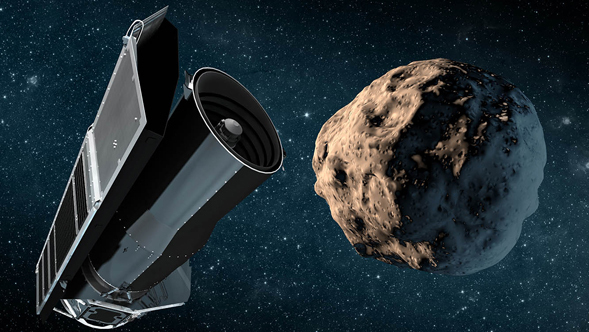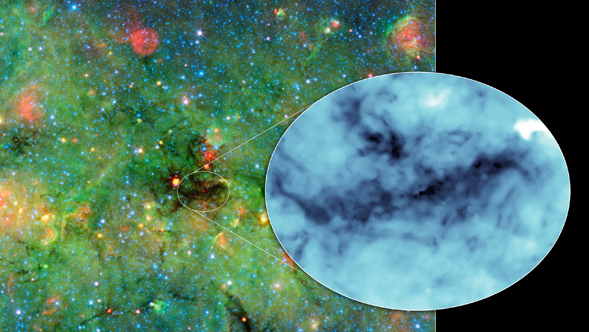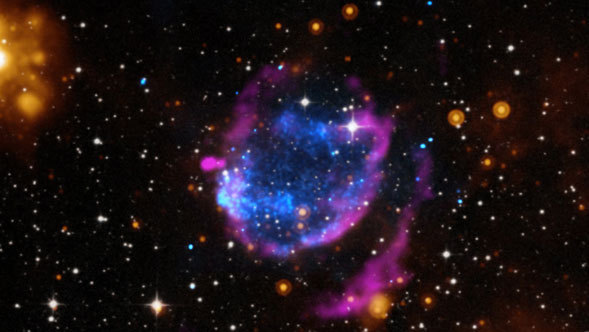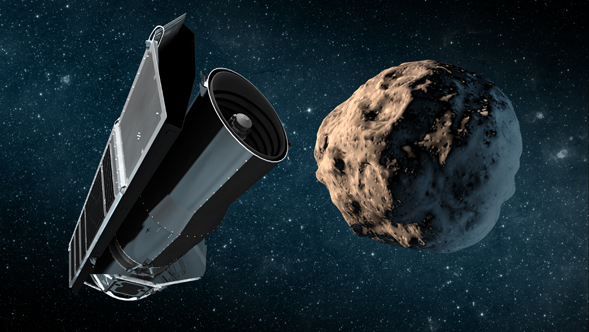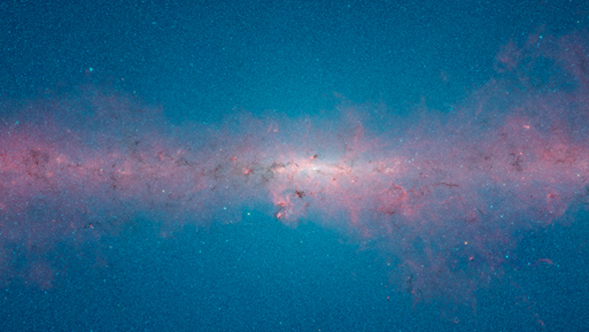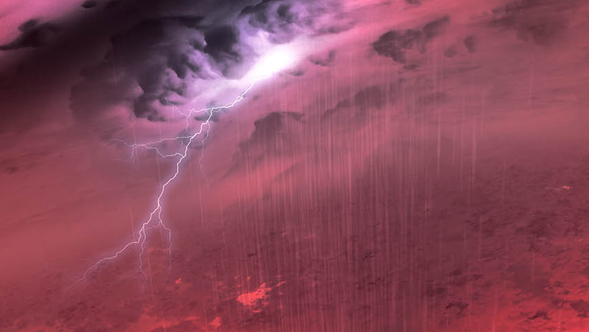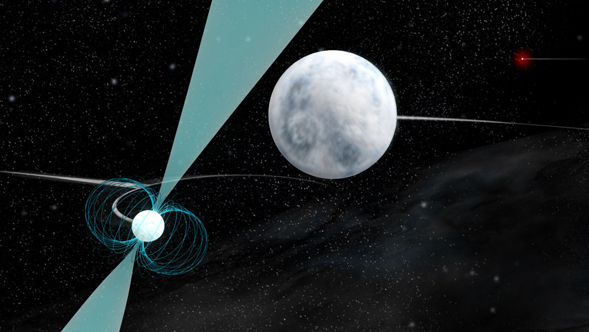Displaying news 151 - 180 of 587 in total
What makes one rose bush blossom with flowers, while another remains barren? Astronomers ask a similar question of galaxies, wondering how some flourish with star formation and others barely bloom.
Astronomers using data from three of NASA's space telescopes -- Hubble, Spitzer and Kepler -- have discovered clear skies and steamy water vapor on a gaseous planet outside our solar system.
Astronomers "fishing" for galaxies turn up surprisingly massive catch. In one of the longest surveys the telescope will have ever performed, astronomers have begun a three-month expedition trawling for faint galaxies billions of light-years away.
NASA's Spitzer Space Telescope has spotted an eruption of dust around a young star, possibly the result of a smashup between large asteroids. This type of collision can eventually lead to the formation of planets.
Astronomers have for the first time caught a glimpse of the earliest stages of massive galaxy construction. The building site, dubbed "Sparky," is a dense galactic core blazing with the light of millions of newborn stars that are forming at a ferocious rate.
NASA's Spitzer Space Telescope has received the 2014 AIAA Space Science Award for its ongoing infrared studies of the hidden cosmos. The American Institute of Aeronautics and Astronautics, or AIAA, a society for the field of aerospace engineering, established the award in 1961 for "individuals demonstrating leadership of innovative scientific investigation associated with space science missions."
NASA's Kepler and Spitzer space telescopes have made the most precise measurement yet of the size of a planet beyond our solar system.
Celebrants this Fourth of July will enjoy the dazzling lights and booming shock waves from the explosions of fireworks. A similarly styled event is taking place in the galaxy Messier 106, as seen by NASA's Spitzer Space Telescope, Chandra X-ray Observatory and the Herschel Space Observatory.
A group of organic chemicals that are considered carcinogens and pollutants today on Earth, but are also thought to be the building blocks for the origins of life, may hold clues to how carbon-rich chemicals created in stars are processed and recycled in space.
Astronomers using NASA's Spitzer Space Telescope have measured the size of an asteroid candidate for NASA's Asteroid Redirect Mission (ARM), a proposed spacecraft concept to capture either a small asteroid, or a boulder from an asteroid. The near-Earth asteroid, called 2011 MD, was found to be roughly 20 feet (6 meters) in size, and its structure appears to contain a lot of empty space, perhaps resembling a pile of rubble. Spitzer's infrared vision was key to sizing up the asteroid.
Through a project dubbed SURFS UP, NASA's Spitzer Space Telescope and Hubble Space Telescope are catching sight of a "wave" of galaxies that emerged in the early universe. Starlight from these primordial galaxies is reckoned to have cleared a fog of hydrogen gas that shrouded the cosmos during a mysterious period known as the Dark Ages.
There were no witnesses to a stellar blast that lit up our skies a millennium ago, but NASA's Spitzer Space Telescope is finding clues in the charred remains.
The dark patch of clouds in this image from NASA's Spitzer Space Telescope is swaddled in so much dust, even infrared light is blocked.
A colossal, deeply dark cloud is found cranking out massive stars in a new Spitzer study.
Sometimes looking at the night sky can say more about the observer than the universe - at least that's how it feels when we're looking at clouds of dust and gas that remind us of a Rorschach inkblot test.
Using data from NASA's Chandra X-ray Observatory and infrared telescopes, astronomers have made an important advance in the understanding of how clusters of stars come into being.
NASA's Wide-field Infrared Survey Explorer (WISE) and Spitzer Space Telescope have discovered what appears to be the coldest "brown dwarf" known -- a dim, star-like body that surprisingly is as frosty as Earth's North Pole.
Long before the term "citizen science" was coined, the field of astronomy has benefited from countless men and women who study the sky in their own time.
Supernovas are the spectacular ends to the lives of many massive stars. These explosions can produce enormous amounts of energy and be as bright as an entire galaxy.
Our Solar System is swarming with asteroids and comets. Although astronomers have identified many thousands of these space rocks, new candidates turn up all the time; some small fraction of which might even pose a threat of colliding with Earth.
NASA's Spitzer Space Telescope, in tandem with other major NASA observatories, has recently embarked on a major new mission to glimpse the universe's very first galaxies.
Touring the Milky Way now is as easy as clicking a button with NASA's new zoomable, 360-degree mosaic presented Thursday at the TED 2014 Conference in Vancouver, Canada.
Gigantic magnetic loops on planet-forming disks explain a mystery of too much infrared light.
One of the closest supernovas to go off in the last few decades is putting on a good show for telescopes on the ground and in space.
NASA's Spitzer and Hubble Space Telescopes team up to find a small galaxy that appears to be lying at the observable edge of our universe.
Astronomers using NASA's Hubble and Spitzer Space Telescopes, Europe's Herschel Space Observatory, and many ground-based telescopes have pieced together the evolutionary sequence of compact elliptical galaxies that erupted and burned out early in the history of the universe.
NASA's Hubble and Spitzer Space Telescopes are providing a new perspective on the remote universe, including new views of young and distant galaxies bursting with stars.
To the surprise of astronomers, most brown dwarfs may be roiled by massive storms.
Astronomers using a number of telescopes, including Spitzer, have discovered a unique stellar system of two white dwarf stars and a superdense neutron star, all packed within a space smaller than Earth's orbit around the Sun. The closeness of the stars, combined with their nature, has allowed the scientists to make the best measurements yet of the complex gravitational interactions in such a system.
How and when galactic metropolises cease their opulent ways is the subject of new research from NASA's Spitzer Space Telescope.
Displaying news 151 - 180 of 587 in total



